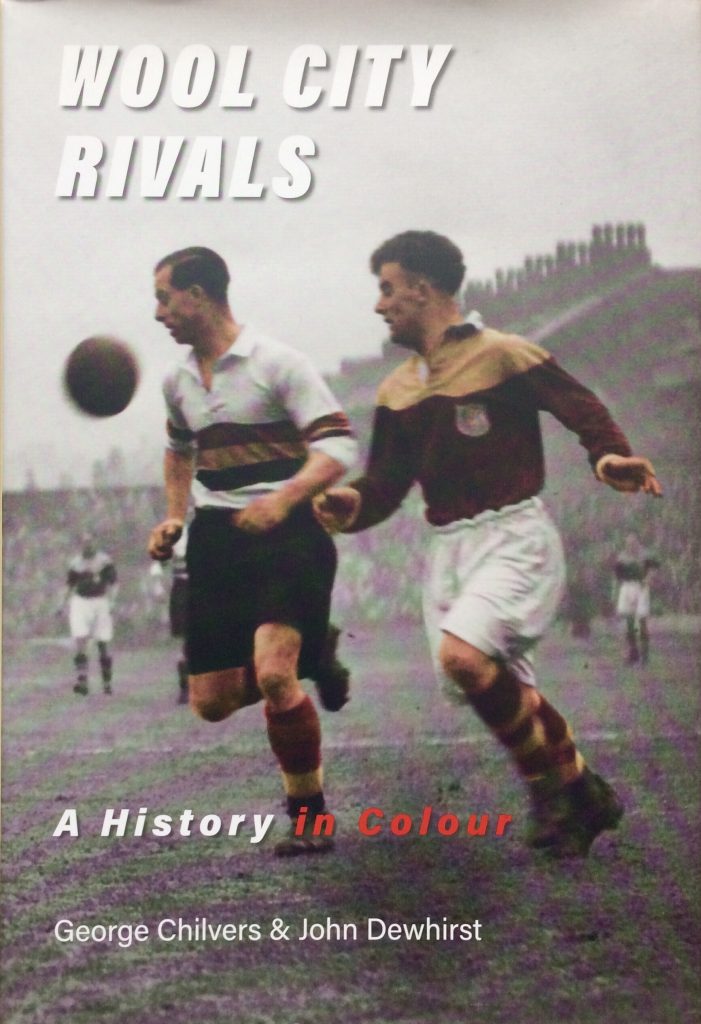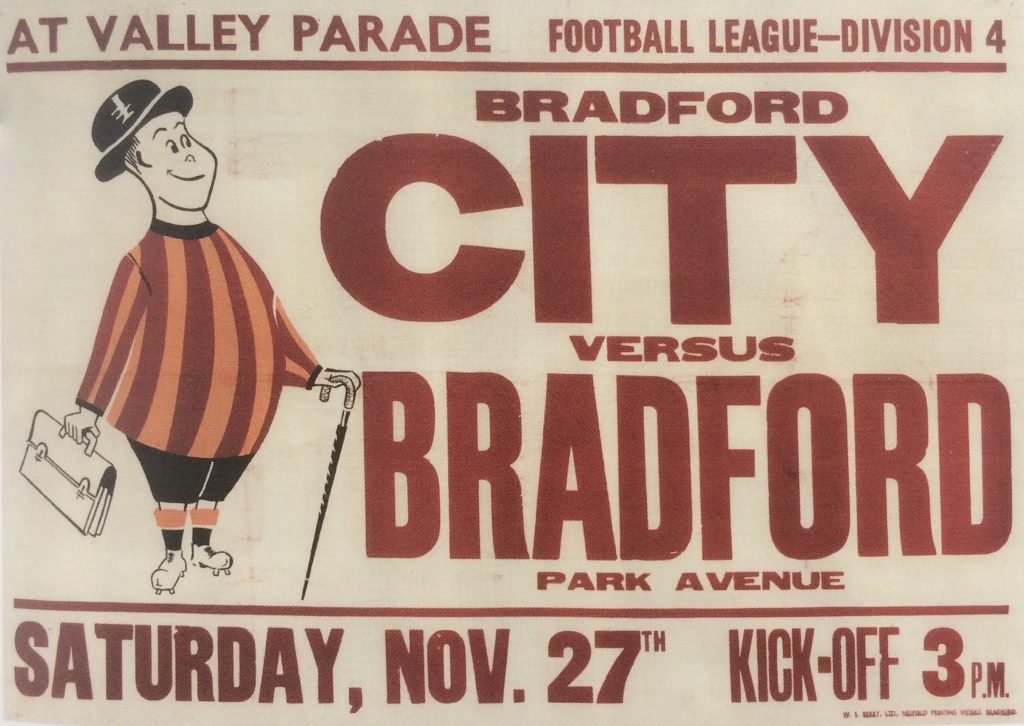Wool City Rivals: A History in Colour by George Chilvers & John Dewhirst
Wool City Rivals is a photographic history of Bradford football from the turn of the nineteenth century. It offers a glimpse into the lost world of early football, when Bradford boasted two top-flight football clubs immediately before and after the First World War. It covers over half a century of images from the years when both City and Park Avenue remained in the Football League, until the latter were voted out in 1970, to be replaced by Cambridge United. Author John Dewhirst is a lifelong Bradford City fan and has extensively documented the city’s football history.


Wool City Rivals inevitably charts the sad decline of the city’s clubs over the decades and the demise of Park Avenue, through archival photographs. These scenes of the distant past have been brought to life by the colourisation of George Chilvers, who details the painstaking process in an informative introduction. By 1907, the city had two football teams as well as the rugby league club Bradford Northern. The decision to reject a potential merger of the football clubs at that point shaped their future direction; as Dewhirst states, “the fragmentation of support and financial backing undermined the prospects for both Bradford City and Bradford Park Avenue.”
From 1922, when City were relegated from the First Division a year after Park Avenue, the two clubs spent a sometimes precarious existence in the lower divisions, struggling financially and on the pitch as the city itself also underwent economic troubles. The bulk of the book documents these years, up to Park Avenue losing their league status.

The book brings together team groups alongside prominent managers, players and personalities from both clubs’ histories, often from cigarette cards and postcards. These include goalkeepers from City’s golden era before the First World War – William ‘Fatty’ Foulke, Mark Mellors and Jock Ewart – to Brian Redfearn, who represented both the city’s teams, as did his son Neil, part of City’s Premiership team in 1999-2000. Despite their decline, Park Avenue still produced players in the 1960s who went on to long top-level careers in Kevin Hector, Kenny Hibbitt and David Lawson (all seen here in team photographs). Many of the 56 meetings of the teams are recorded, between February 1912 and the final Football League derby of January 1969.

Both grounds are well represented, with stands designed by the famous stadium engineer Archibald Leitch; Valley Parade, City’s home since 1903, and Park Avenue, now sadly one of English football’s lost venues. As well as a potted history of football in Bradford, the book contains characters and crowds, evocative settings from English football’s past – other ‘lost’ grounds including Accrington Stanley’s Peel Park, Chester’s Sealand Road and Darlington’s Feethams.
Wool City Rivals is unique in its scope of restoring colour to old monochrome photographs, bringing the past to life in the process. Not only filling a gap in the city’s football history, the book provides a fascinating insight into social and sporting tradition. It forms part of a series documenting Bradford football, with earlier publications covering the clubs’ formative years. The next volumes will cover the periods 1908-39 and 1939-74 in detail.

A Brief History of League Football in West Yorkshire
The city of Bradford had grown, as the book’s title suggests, with the wealth of the West Yorkshire textile industry. In the sporting arena as well as the wool trade, Bradford was pre-eminent in the county by the late Victorian era. Its clubs emerged from rugby league to become West Yorkshire’s first Football League teams. Bradford City led the way, entering the second division in 1903 – promoted five years later, they won the FA Cup in 1911. Park Avenue joined them in the league in 1908, and when they too were promoted in 1914, the city boasted two top-flight clubs. Leeds City had followed Bradford City in 1905, and Huddersfield Town in 1910.
1920-21 was the last season that both Bradford teams were in the top tier with Park Avenue relegated – also Leeds United’s first season as a league club. Halifax Town became the fifth West Yorkshire side in 1921, losing their league status in 1993 and again in 2002. Bradford City were relegated from the First Division in 1922, only returning as a Premier League club in 1999. It was Huddersfield who became West Yorkshire’s first league champions in 1923-24, the first of three successive titles.
